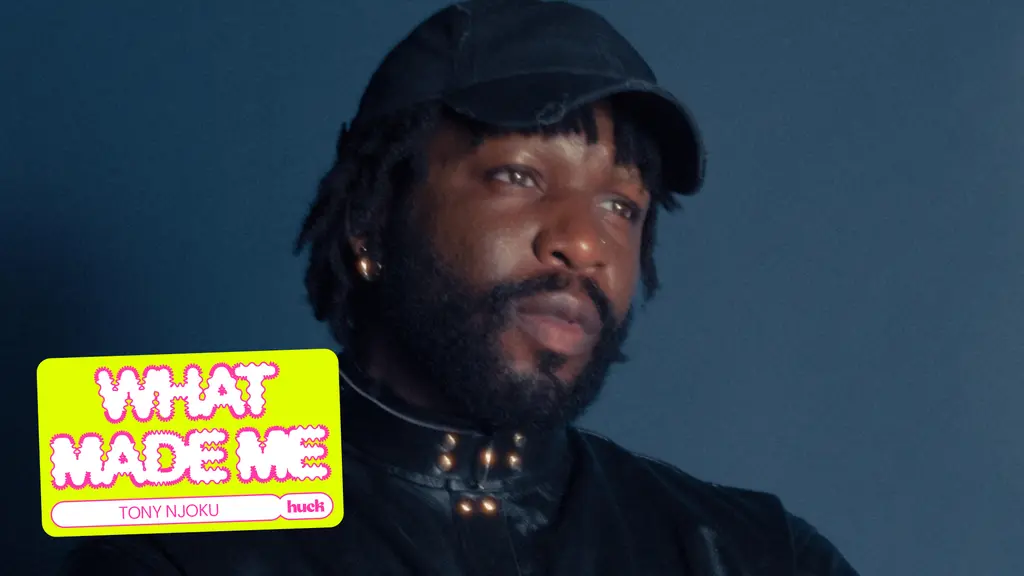The queer modernists who radicalised New York art
- Text by Miss Rosen
- Photography by Jarrett Earnest / David Zwirner Books

During the first half of the 20th century, when homosexuality was a crime, the act of even depicting it could land an artist jail time.
“A lot of the art that I found was not work that had been exhibited or reproduced before,” says Jarrett Earnest, author of The Young and Evil: Queer Modernism in New York 1930-1955 (David Zwirner Books) and curator of the 2019 exhibition of the same name. “It was private art, made for their own pleasure and needs.”
“The work lived in the collections of friends, as museums wouldn’t have wanted it. It got passed to friends and lovers, and was circulated and preserved through those relationships, which were overlaid with artistic, intellectual, sexual, and romantic interests.”
The Young and the Evil explores the network of artists behind this complex movement, including Paul Cadmus, Jared French, George Platt Lynes and Pavel Tchelitchew.

Paul Cadmus, Monroe Wheeler, 1938 © 2019 Estate of Paul Cadmus / Artists Rights Society (ARS), NY

Jared French, Murder, 1942. Courtesy of the Pennsylvania Academy of the Fine Arts, Philadelphia. John D. Phillips Fund
“I wanted to tell a story that was about relationships and how complicated they can be in a moment when people were living in queer, polyamorous relationships and there wasn’t a public language policing the boundaries of those things,” Earnest says. “Someone could be your artistic collaborator, lover and also married to your sister – there was a lot of fluidity there.”
In both the book and the exhibition, Earnest focuses primarily on the lives of the artists. For him, the messenger and the message cannot be bifurcated; they must be read together, with the understanding that the whole is greater than the sum of its parts.
“One of the reasons why this show struck a chord is because it was a glimpse at people who were doing something for a very deep, real reason,” he says. “The majority of what young people who engage with ‘contemporary art’ will have experienced is very trivial and frivolous…. the product of people whose ambitions were economic and social, but not necessarily personal in an artistic sense.”
“When you make something that you have no ability to monetise or to show for any public acclaim but because you need to do it, that is what is art is about.”

Fidelma Cadmus Kirstein, Two Women, c. 1930-1939

Pavel Tchelitchew, George Platt Lynes, 1935

Paul Cadmus, Shore Leave, 1933. Whitney Museum of American Art, New York Gift of Malcolm S. Forbes. © 2019 Estate of Paul Cadmus / Artists Rights Society (ARS), NY

Pavel Tchelitchew, George Platt Lynes, c. 1937-1942

Paul Cadmus, Stone Blossom: A Conversation Piece, 1939-40. Museum of Fine Arts, Boston. Juliana Cheyney Edwards Collection and Seth K. Sweetser Fund © 2019 Estate of Paul Cadmus / Artists Rights Society (ARS), NY
The Young and Evil: Queer Modernism in New York 1930-1955 is out now on David Zwirner Books.
Follow Miss Rosen on Twitter.
Enjoyed this article? Like Huck on Facebook or follow us on Twitter.
You might like

Tony Njoku: ‘I wanted to see Black artists living my dream’
What Made Me — In this series, we ask artists and rebels about the forces and experiences that shaped who they are. Today, it’s avant-garde electronic and classical music hybridist Tony Njoku.
Written by: Tony Njoku

Block9 reveals its Glastonbury Festival 2025 plans
Party and protest — The nightlife hub will feature a bigger-than-ever Saturday daytime block party across The NYC Downlow and Genosys, and a huge collaboration with artist-activist group Led By Donkeys.
Written by: Isaac Muk

In photos: 14 years of artist Love Bailey’s life and transition
Dancing on the Fault Line — Photographer Nick Haymes’s new book explores a decade-plus friendship with the Californian artist and activist, drawing intimate scenes from thousands of pictures.
Written by: Miss Rosen

Remembering Holly Woodlawn, Andy Warhol muse and trans trailblazer
Love You Madly — A new book explores the actress’s rollercoaster life and story, who helped inspire Lou Reed’s ‘Walk on the Wild Side’.
Written by: Miss Rosen

This photographer picked up 1,000 weed baggies in New York and documented them
0.125OZ — Since originally stumbling across a discarded bag in Brooklyn, Vincent ”Streetadelic” Pflieger has amassed a huge archive of marijuana packaging, while inadvertently capturing a moment as cannabis went from an illicit, underground drug to big business.
Written by: Isaac Muk

Mark Gonzales
City Dreaming — Living skate legend Mark Gonzales radiates with imagination as he roams about the busy New York streets.
Written by: Jay Riggio